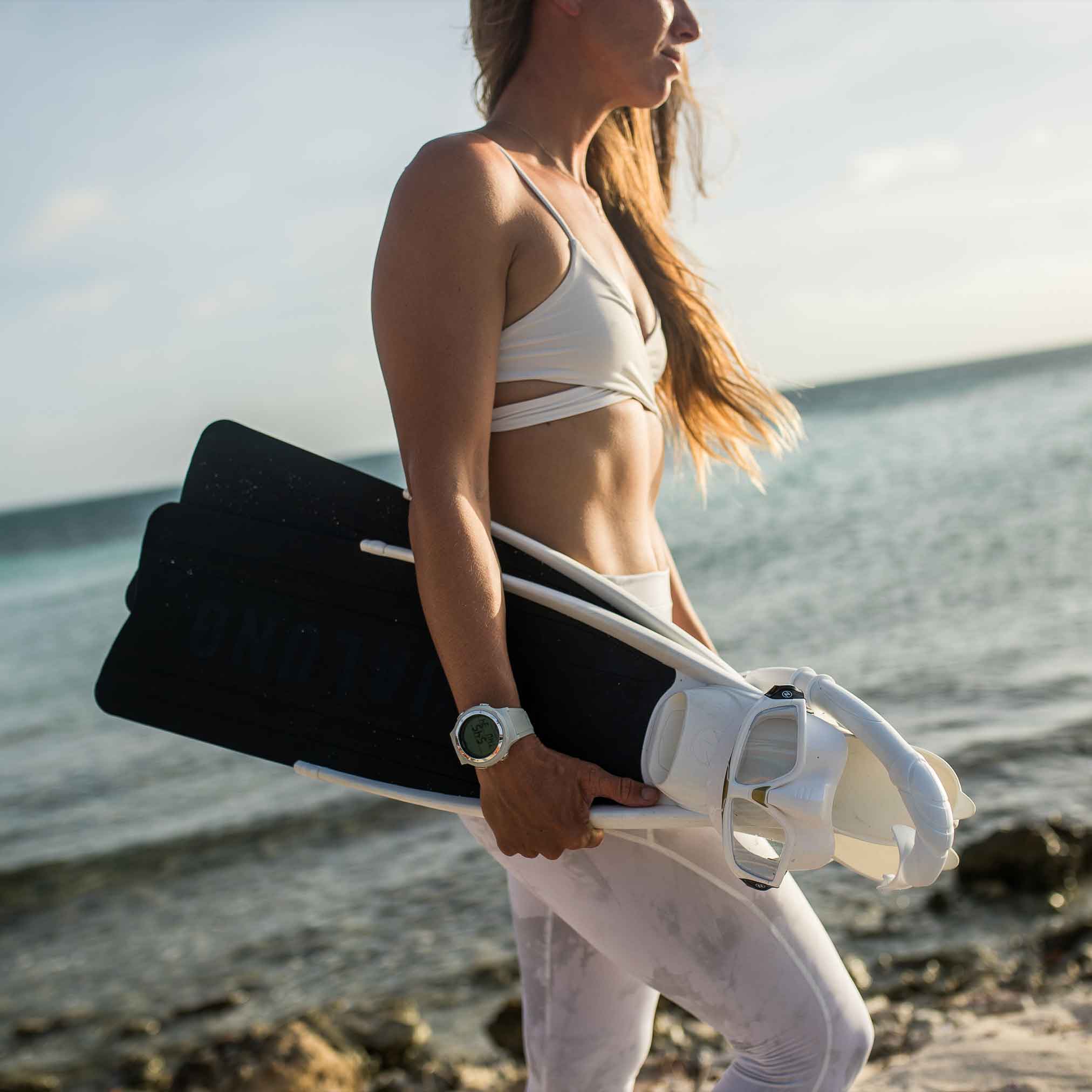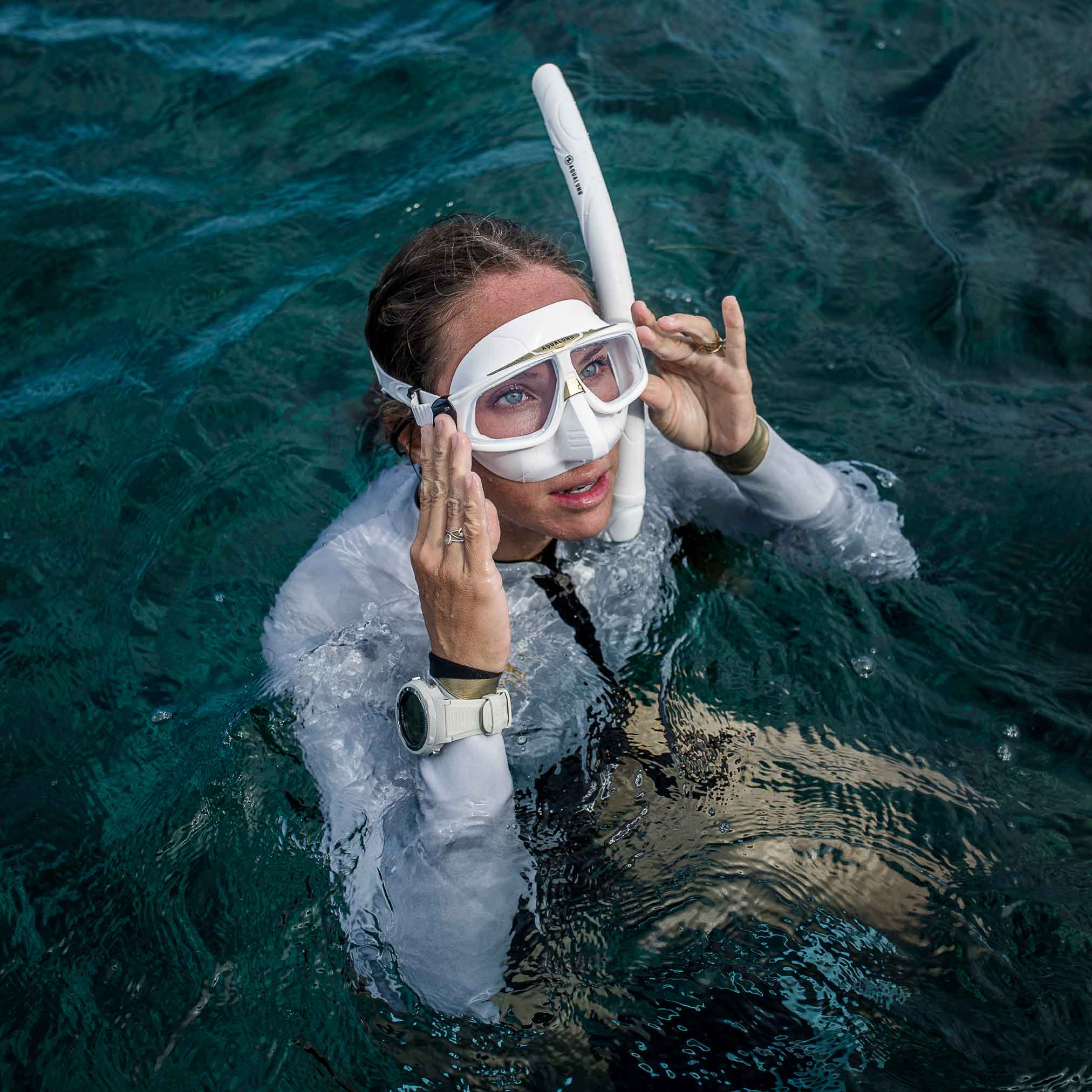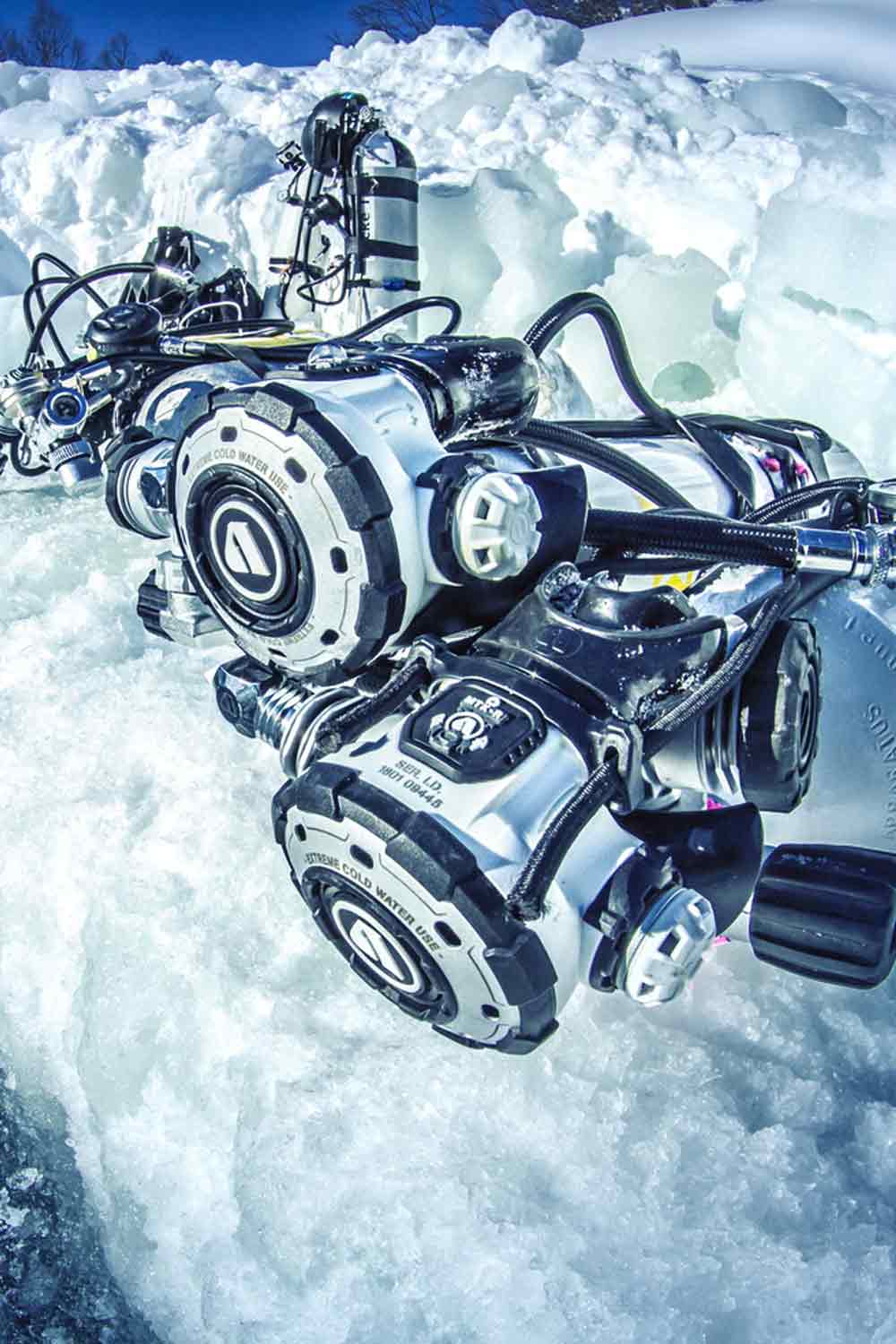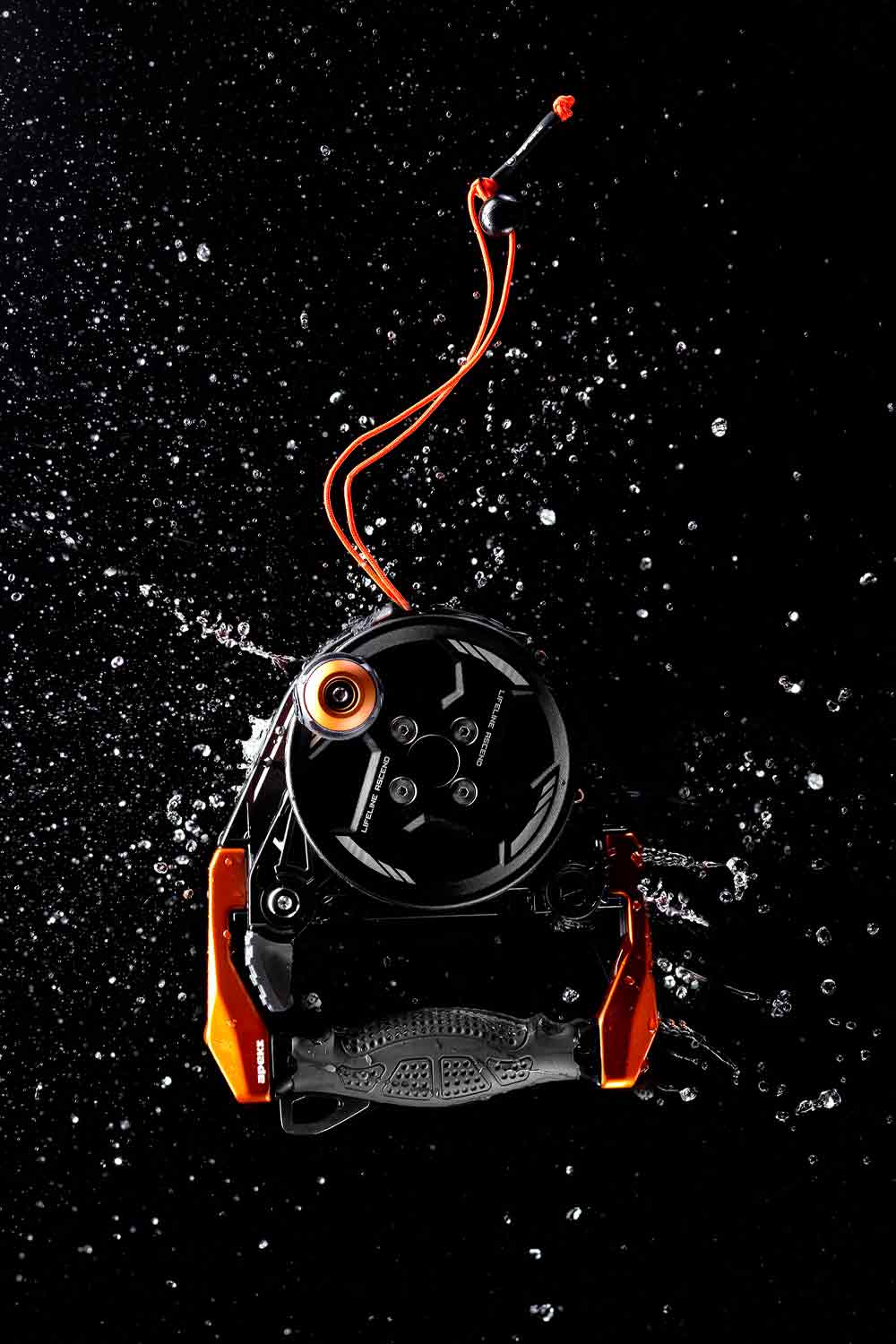Scuba Diving Melbourne, Wreck Dives
Wreck Diving Melbourne
The Best Victorian Wreck Dives
HMAS Canberra – Depth 18-30 Meters
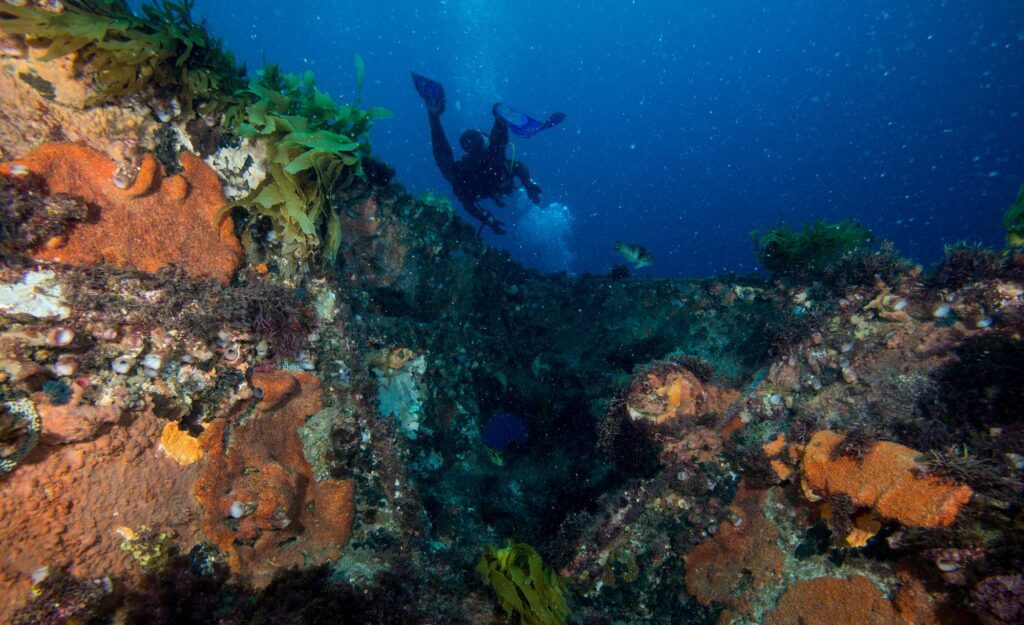
This ship is spectacular. The HMAS Canberra was Scuttled on the 4 October 2009 just off Ocean Grove, Victoria to create an artificial reef and divers playground.
Some key points around the shipwreck are that there is plenty of this wreck that can be safely explored by Open Water certification divers and then the Advanced divers will enjoy exploring down to her maximum depth on the sand of 29m. Penetrating the wreck showed that even seasoned wreck explorers will enjoy exploring this wreck as the maze of rooms each with different items to view means many dives will be needed to truly explore her end to end. Whilst the ship has been made very safe with multiple entries and exit points throughout, there is still a true feeling of exploring a real wreck with many over head areas making this a true wreck to respect.
Many areas inside the ship are protected form surge giving great opportunity to plan a dive to suit the conditions of the day.
The mooring system appears to have been ideally placed being quite close to the ship and will allow for a good setup to facilitate efficient and safe access too and from the wreck.
The HMAS Canberra Dive is a must-do dive when visiting Victoria.
Eliza Ramsden – Depth: 21 metres
TheEliza Ramsden was a three-masted iron barque built in Clyde, Scotland in 1874. She was around 45 metres in length, 8 metres wide and drew 4metres. During the night of July 1875, she struck Corsair Rock while leaving the Heads for Newcastle. In an attempt to return to Melbourne, she sank in the South Channel where she sits upright on her keel. Over the years the Ramsden has been blasted to minimise the hazard she created to shipping, but despite all this, she still presents an excellent dive. Her bow, in particular, coming up from 21to 14 metres, is the most popular section providing photographers with a wide array of marine life.
HMAS Goorangai – Depth: 16 metres
In1940, while returning to Portsea from Queenscliff, the minesweeperGoorangai was cut in two by the Duntroon. All 24 lives were lost, and the Goorangai is now a war grave. Only seven bodies were ever recovered. Permits are required to dive on the Goorangai which are provided by the Charter. A great way to finish a days diving.
SS Coogee – Depth: 34 metres
The Coogee was a bay steamer used in Port Phillip Bay until it was stripped and scuttled in 1927 just outside the Port Phillip Heads. The wreck now lies in 34metres of water and is abundant with marine life and still quite intact. The Coogee is a fantastic photographic dive.
SS Courier – Depth: 40 metres
The SS Courier was a 728-tonne steel bay steamer originally designed as a naval dispatch vessel. She was a fast steamer and was regarded as the quickest of her day. She was scuttled in 1928 and found her watery grave at 40 metres below. She lies on her keel, although she has three major sections. Her bow faces north and her stern to the south. The stern section has a small penetration area (only if the conditions are right).
In this section, there are some original tiles from the 1stClass smoking area on the floor that can be easily seen with a torch. The boilers are a large part of the wreck today and are worth swimming around. Because of the depth, only a short bottom time is permitted so plan your dives to ensure you see everything over a few dives (you won’t see it all in just one dive). An excellent dive, you won’t regret it. Sidemount or Twin independent or manifold cylinders are highly recommended.
SS Gambier – Depth: 12 metres
TheSS Gambier was sunk in 1891 near Pope’s Eye in the West Channel after colliding with the SS Easby. Because of the threat to shipping, the owners of the SS Gambier were ordered to remove her from the WestChannel. This was done with explosives. Subsequently, this dive site offers scattered wreckage over a sandy bottom. After you’ve dived everything else in the bay try this one, you’ll love the change.
SS Milora – Depth: 45 metres
TheSS Milora was a 3347-tonne coal transport ship, which was built in1893. She was on route from Newcastle to Melbourne when she ran ashore near Queenscliff. Due to the expense of the repairs that were needed, she was sold off as scrap and scuttled in 1935. She is the deepest of all the wrecks in the Ships Graveyard outside Port Phillip Heads. TheSS Milora lies north/west-south/east, with her bow facing north/west. Her hull is still solid, so this dive is only for those who are experienced with Melbourne diving. The conditions can change regularly with little warning. This dive should be conducted with independent or manifold twin cylinders.
SS Rotomahana – Depth: 38 metres
The SS Rotomahana was a 1777 tonne clipper-bow steamer built-in 1879. She was generally a passenger steamer and small cargo transport between NewZealand and Melbourne. She travelled this route for five years and was then transferred to the Launceston-Melbourne route. She was scuttled in 1925, and over the years in her watery grave, she has broken down quite considerably, leaving only her boilers standing between the rubble. Twin independent or manifold cylinders are highly recommended.
The Hurricane – Depth: 12 metres
The Hurricane was built in Clyde Scotland in 1853. She was an iron ship measuring 70 metres in length and weighing 1198 tones. She sank in1869, after hitting Corsair Rock while passing through Port PhilipHeads. She continued up the South Channel, while taking in water, and came to rest off the coast of Rosebud. Although there is not much of the Hurricane left, her remains have provided an artificial reef for an abundance of fish life. Dive the Hurricane on an Ebbing tide and make sure you take your catch bag – this is one of the largest scallops areas in the bay. You’re guaranteed a good feed.
William Salthouse – Depth: 12 metres
This 251 barque (originally a brig) was built in 1824 and was 28 metres in length, 8 metres wide and had a draft of 5 metres. On the maiden voyage to Melbourne from Canada in 1841, the William Salthouse came to grief at the entrance to Port Phillip Bay. After striking a reef, it sunk in the West Channel in about 12 meters of water. Carrying cargo at the time, the Salthouse makes for an exciting dive. Special permits are required which are supplied by the boat charter. Care has to be taken because this is the oldest wreck in Port Phillip Bay.

